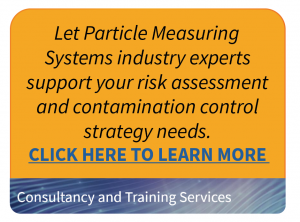How is contamination defined and what does it mean to control that contamination?
Conventional approaches to contamination control are changing. They are being driven by the need to anticipate contamination events, rather than simply react to them, and new regulations are supporting this shift in thinking. Defining a Contamination Control Strategy (CCS) is unique for each process and requires an intimate understanding of both the process and how to implement an effective strategy. This blog series will go into depth on both topics. You will learn how to:
- What are the major types of environmental contaminants
- Define the potential root causes of contamination
- Define a unique CCS
- Design a cleanroom according to Sterility Assurance Principles
How is “Contamination” defined?
Contamination, as referred to in environmental monitoring, includes environmental contaminants that present themselves in clean manufacturing areas from building, personnel, and product introduction. They are controlled by appropriate limits defined by a sound CCS.
Non viable particles = Does not contain a living microorganism but acts as transportation for viable particles
Viable particles = Bacteria, Molds, Yeasts, Endotoxins (a component of the exterior cell wall of Gram-negative bacteria)
Total particles = non viable + viable particles
To successfully control viable contamination a holistic approach is needed. That is, drawing a connection between data points and interpreting that data collected from monitoring.
What does it mean to control potential contamination?
In the past, controlling contamination meant focusing on sampling methods to detect contamination as it occurred using instruments and methods such as: particle counters, microbial air samplers, petri dishes, surface monitoring, product and water bioburden testing, filter integrity testing, and more.
Today, the accepted method is a more holistic approach, with the goal being to keep the potential contamination under control before it presents itself as a problem. This is done by building levels of control into the building and process using:
- Quality by design (QbD)
- Quality Risk Management (QRM)
Together these planning steps constitute a Contamination Control Strategy (CCS). The benefit of the CCS is to:
- Identify potential risks
- Mitigate already-identified risks
- Measure contamination in the Critical Control Points (CCP’s)
Want to read more? Jump to other released PMS posts in this series:
- Part 1 of 4: How is Contamination Defined? (You are here!)
Coming Next
- Part 2 of 4: What do the guidelines say about CCS?
- Part 3 of 4: How to define the potential root causes of contamination.
- Part 4 of 4: How to design a cleanroom according to Sterility Assurance Principles
- Extra: Contamination Control Strategy FAQ’s
Learn more… Get the full paper here.

